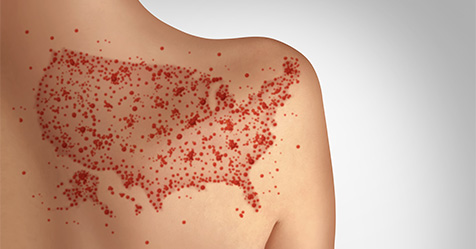For the small mom-and-pop cleaning contractor, cleaning supply costs may be a minor concern. Of course, everyone wants to get the best product at the best price, but in many cases, supplies may be a small cost compared to the overall business operation.
However, for mid-sized to larger cleaning contractors that clean thousands, if not millions, of square feet of facility space per year, cleaning supply costs are a major expenditure. However, one way these contractors can manage their cleaning supply costs to ensure they get the most bang for their buck, is through a process called product mapping.
Defining Product Mapping
Product mapping is a method of analyzing the underlying attributes and benefits of a product; in essence, it measures product performance and other metrics, such as costs. Marketing agencies often use this method to get a better idea of what consumers think about one product compared to similar products on the market. To do this, marketers interview purchasers of these competing products and use the results to develop a graphic representation (a map) that indicates what these people like most, find most valuable, dislike most, or find least valuable about a product.
How Cleaning Companies Can Use Product Mapping
Product mapping can also be used by large contract cleaning companies as well as large purchasers of cleaning supplies, such as school districts and universities, to analyze products; however, in these settings, the process often works somewhat differently. The technique is far more practical and less involved than that used by marketing agencies. However, it can still prove very valuable and, in many cases, yield a significant cost savings for the contract cleaner.
For instance, a chemical manufacturer or distributor will meet with a cleaning contractor and analyze many, if not all, of the cleaning solutions it currently uses for a variety of cleaning tasks. With all products identified, they can now be “mapped,” allowing each party to gauge how products are used, their overall effectiveness, ease of use, costs, if they are environmentally preferable or not, and other criteria.
The process may find some more expensive products to be harder to use than the less expensive products, and the opposite may be true, as well. However, now contractors have a map they can turn to in order to make more effective—and less costly—product selections.
Benefits of Product Mapping
Another goal of product mapping is to eliminate as many specialty cleaning solutions as possible. While some may still be necessary, replacing these products with multipurpose or general purpose cleaners, which can be used for several cleaning tasks, invariably can prove to be a cost savings.
Additionally, eliminating specialty cleaning solutions can result in other benefits, such as:
- Better training. It is easier and less time consuming to train workers on a few cleaning products than on many different products. Additionally, more effective training can lead to improved worker safety.
- Product tracking. Purchasing fewer products makes it easier to keep safety data sheets up to date.
- Inventory efficiency.Minimizing the number of items ordered is more efficient for the contractor and his/her distributor; they can better manage inventory and determine more efficient fill rates.
- Space. When the number of products is kept to a minimum, contractors require less janitorial closet storage space in the facilities they clean.
- Helping the environment. Ordering fewer products promotes sustainability by cutting down of packaging and transportation.
- Avoiding ordering multiple products for the same tasks. Replacing multiple products with one or two products eliminates redundancies, invariably resulting in a cost savings.
Planning for Multiple Facilities
Contract cleaners may also use product mapping to help narrow down how many types of products are purchased for multiple locations. For example, the various paper towel dispensers in different locations can be mapped with the goal of finding one type of towel that can be used in multiple locations.
Selecting products that can be used in multiple locations helps reduce the number of products purchased, providing the many benefits just listed above. It also helps to secure better pricing for these products.
While the product mapping process may not be as necessary for the small mom-and-pop contractors, they can still benefit from it. Just as large contract cleaning companies and facility managers have discovered, the information can prove invaluable. It is one of the few methodologies available to help streamline purchasing, make informed choices instead of trial-and-error purchasing decisions, and reduce supply costs.


